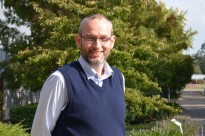Darren Heavens has witnessed a fascinating transition at The Genome Analysis Centre as the Norwich, UK-based institute shifted from data-generation mode to data-analysis mode. When the center launched more than five years ago, there was a fairly even split between laboratory-based scientists and bioinformaticians, Heavens says; today, there are about 15 laboratory scientists and nearly 70 bioinformaticians. The focus is on generating great data that lets the bioinformatics experts perform the highest-quality analyses.
Heavens, a team leader in the Platforms and Pipelines group, spends a lot of his time figuring out how to make the data produced at TGAC more amenable to bioinformatics crunching. One of the newest weapons in his arsenal is the SageELF, an automated system that produces 12 contiguous fractions from a DNA sample.
His prior experience with Sage Science instruments came from the BluePippin, which he began using for size selection of NGS libraries after a TGAC bioinformatician presented data on the variability of insert sizes in libraries he was trying to assemble. “He did the data analysis and found that BluePippin sizing improved his outputs no end,” Heavens recalls.
So it was a no-brainer for Heavens to try out the new SageELF, which he’s been using for a few months now. “It’s great because it gives us the chance to make multiple libraries from one sample,” he says, noting that this helps keep reagent and other costs in check. For experiments requiring a very specific insert size, Heavens likes to run a sample on the SageELF and map the fractions to assembly data to determine which best meets the criteria before going ahead with the rest of the experiment.
His team uses the instrument for long mate-pair NGS projects, restriction-digest sequencing, and sequencing projects focused on copy number variation. For CNVs, Heavens and his colleagues came up with a protocol using SageELF to separate PCR products; they then sequence the largest fraction to get an accurate view of the highest copy numbers present in the sample. “That gives us the true copy number,” he says. “The duplicated genes themselves are so similar that if you don’t have the full-length fragment, they just collapse down in the assembly.” The protocol, which they developed for a project for one client, was so successful that several other clients have now come to TGAC asking for the same method for their samples, Heavens says.
The biggest advantage of SageELF compared to other fractionation methods is its recovery, according to Heavens. His team gets 40% to 45% recovery from input material with the platform, while “with a manual approach you’d be lucky to get 10% to 15% recovery,” he says. “For us that’s a big plus.” He notes that scientists working with precious samples might find SageELF particularly useful for making the most of input DNA.
Heavens says setup and training were simple and straightforward, and that his team is now running the SageELF at or near capacity, which equates to two runs per day of two cassettes each. Since each cassette yields 12 fractions, that’s 48 fractions each day that the TGAC team could potentially use for sequencing. “It has opened up so many avenues for us,” Heavens says.






